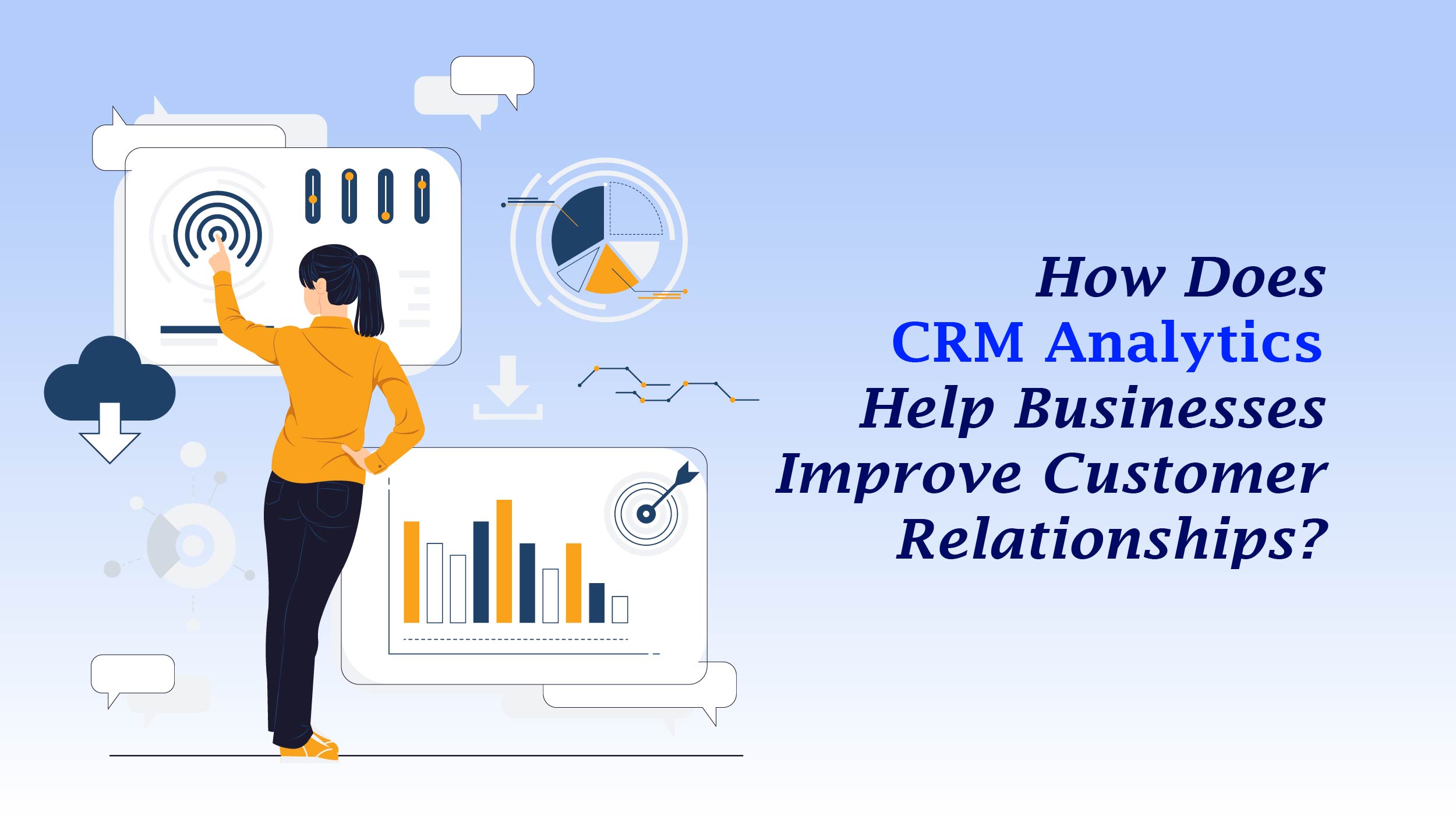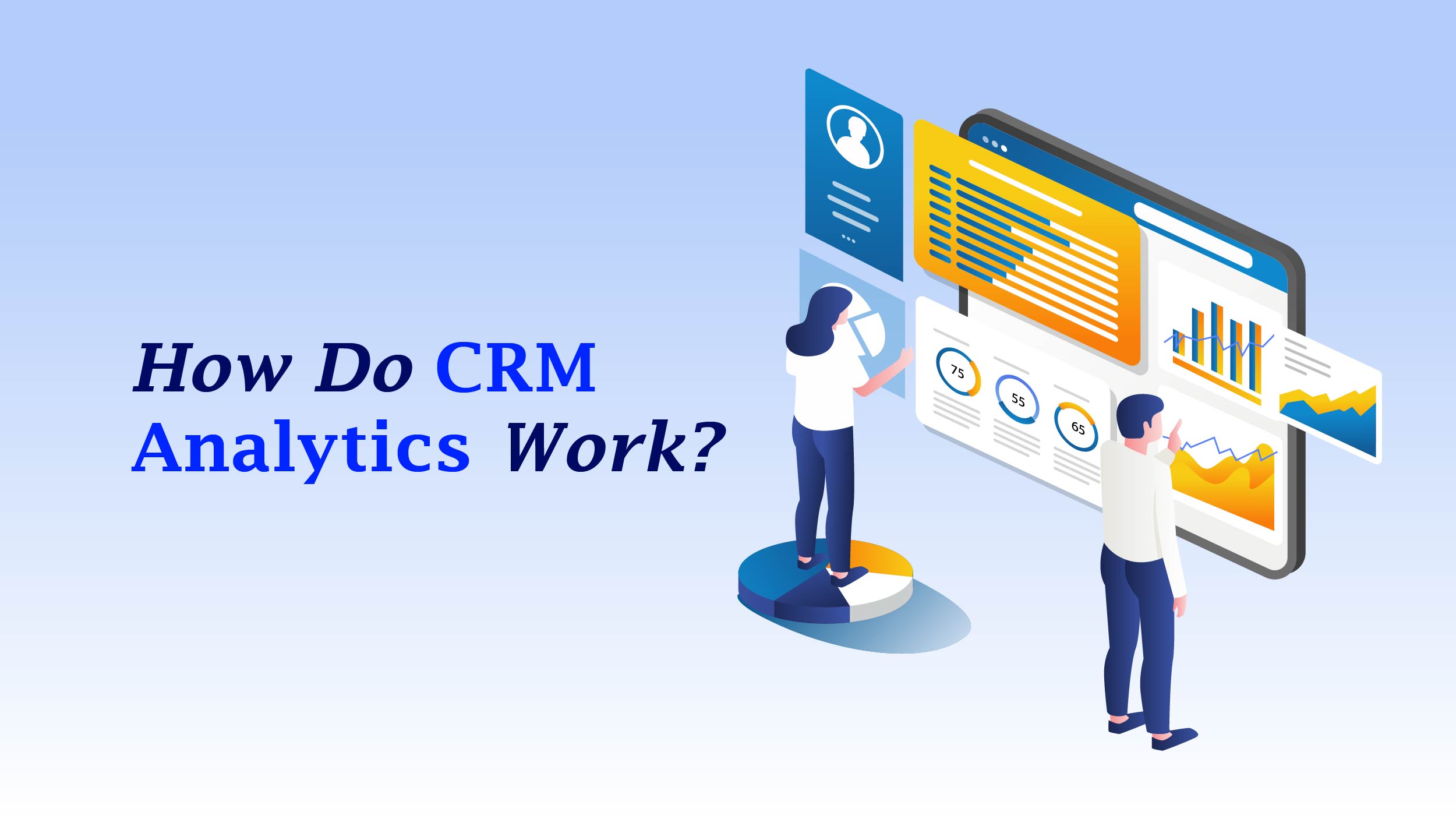What if there is a tool to analyze customer data and tell exactly what strategy a business should follow? By 2025, more than 180 zettabytes (ZB) of data will be created, recorded, duplicated, and consumed worldwide. This means there’s a need for sophisticated tools that help digest this massive data for improved decision-making.
This is where CRM Analytics (formerly Einstein Analytics, Tableau CRM) comes into the picture. CRM (customer relationship management) analytics is the umbrella term for all programming designed to analyze and present customer data to an organization in a way that makes better business decisions easier to make.
Let’s dive in and understand everything about it.
What is CRM Analytics?
Customer relationship management analytics, or CRM analytics, is a subset of online analytical processing (OLAP) that makes use of customer data to assist businesses in making more informed decisions.
As businesses have expanded their customer interaction strategies to include new, frequently faster channels, there has been a growing opportunity and necessity to transform consumer data into actionable insights. As a result, software companies have created specialized products that carry out customer data analysis. Due to this, many CRM systems include analytics as a component. According to studies, the number of companies implementing CRM systems will rise by 12% annually by 2028.
CRM analytics are useful for:
- Segmenting customers
- Focusing on marketing initiatives
- Increasing the precision of sales projections
- Finding hidden trends
- Discovering more advantageous prospects for growth and sales
- Enhancing the standard of corporate procedures
How Does CRM Analytics Help Businesses Improve Customer Relationships?
 Here’s how CRM analytics contributes to enhancing these relationships:
Here’s how CRM analytics contributes to enhancing these relationships:
Understanding Customer Behavior: It provides a more in-depth understanding of customers by examining interactions and behaviors such as engagement patterns and past purchases. Businesses can customize their products, advertising campaigns, and customer support to meet each consumer’s requirements and preferences because of this insight.
Personalization and Targeted Marketing: Companies can segment their clientele and create tailored marketing efforts by utilizing CRM statistics. Businesses may increase the relevance and efficacy of their marketing campaigns by using client data to create tailored messages, offers, and recommendations.
Improving Customer Service: It gauges customer happiness and provides insights into customer service interactions. Metrics like response time and initial call resolution rate can help firms pinpoint areas for development and enhance the customer experience in general.
Identifying Upselling and Cross-selling Opportunities: It helps businesses pinpoint opportunities to upsell or cross-sell to existing customers. By analyzing customer purchase history and behavior, businesses can suggest relevant products or services, boosting customer value and loyalty.
Enhancing Customer Retention: Through CRM analytics, businesses can spot patterns and trends indicative of potential churn. By proactively addressing customer concerns, offering personalized incentives, and delivering exceptional experiences, businesses can improve customer retention rates.
Predictive Analytics: Leveraging predictive modeling, CRM analytics forecasts customer behavior and preferences. By analyzing historical data, businesses can anticipate future customer needs, enabling proactive engagement and personalized recommendations.
How Do CRM Analytics Work?
 Below is the step-by-step process of how CRM works.
Below is the step-by-step process of how CRM works.
- Integration of Data: Salesforce CRM Analytics can import data from multiple sources, both inside and outside the company. By supporting connectors to databases, data warehouses, and external apps, it enables enterprises to import data from many platforms.
- Data Analysis: It automatically analyzes the integrated data, even when there are millions of rows. It uses sophisticated analytics techniques to look for patterns and insights in the data. Organizations can use this analysis to make data-driven decisions and find the answers to important issues.
- Data Visualization: It offers strong capabilities for data visualization. To display data in a way that is both aesthetically pleasing and simple to comprehend, users can develop interactive dashboards, reports, and visualizations. Users can swiftly obtain insights and make wise decisions with these visuals.
- Embedded Analytics: The CRM platform strongly integrates with Salesforce CRM Analytics. Teams that interact with customers can now get analytics directly into their everyday work processes due to the actionable insights and forecasts within Salesforce workflows. This integration increases user productivity by eliminating the need to switch between multiple platforms.
- AI-Powered Predictions: Predictive analytics is enabled through the utilization of artificial intelligence (AI). Based on the examined data, it may produce AI-powered forecasts and suggestions that assist organizations in predicting customer behavior, seeing trends, and taking proactive measures.
- Mobile Accessibility: Users may examine insights and reports from anywhere, even when they’re not in the office, due to its mobile accessibility. Teams can view and act upon essential data while on the go because of this mobile accessibility.
3 Types of CRM Analytics
Different types of CRM analytics systems exist, each serving unique purposes within an organization: collaborative, operational, and analytical.
Collaborative CRM focuses on streamlining processes across departments, offering a centralized database accessible to marketing, sales, and customer service. This enables efficient communication tracking and customer issue resolution.
Operational CRM automates tasks like sales forecasting and marketing campaign evaluation, with modules for sales, marketing, and customer service.
Analytical CRM delves into consumer behavior analysis, leveraging data gathered by operational CRM to offer insights for optimizing marketing, sales, and support strategies.
Benefits of CRM Data Analysis
CRM data analysis offers widespread benefits across departments, enhancing visibility and expediting decision-making. According to studies, 58% of respondents say CRMs speed up decision-making. Subsequently, 54% mentioned more efficient operations, and 53% said improved cooperation among sales, marketing, customer service, and operations.
CRM Analytics for Sales
In sales, CRM analytics track various metrics crucial for optimizing processes, from lead drop-out rates to sales call success. By leveraging data-driven strategies, sales teams can refine their approaches, improving conversion rates and revenue. Accurate forecasting tools empower organizations to plan and invest confidently.
CRM Analytics for Customer Service
For customer service, CRM analytics enable close monitoring of practices and feedback analysis, facilitating continuous improvement and proactive issue resolution. Accessible and accurate customer data allows for scalable growth with full visibility into operational effectiveness.
CRM Analytics for Marketing
In marketing, CRM data analysis optimizes campaigns by tracking metrics like email open rates, social media interactions, and video viewership. This data-driven approach guides businesses in refining messaging and strategies in real-time, ensuring effective communication with target audiences.
Understanding the Key Metrics of CRM Analytics
When it comes to managing customer relationships, there are several important marketing campaign analytics metrics that businesses use to track their performance and make strategic decisions. Here’s a breakdown of some common CRM metrics:
Customer Turnover: This indicator shows us how many clients a company lost in a given time frame. It’s a crucial indicator of consumer loyalty and shows us where we might need to improve.
Net Promoter Score (NPS): The NPS gauges client loyalty and satisfaction by asking clients if they would suggest our business to others. It helps us understand the general perception that customers have of business.
Customer reporting and dashboards: It provide businesses with actionable insights and a visual representation of key customer metrics for informed decision-making
Rate of Renewal: This is an important statistic for companies that provide subscription-based services. It provides information on the number of clients who opt to extend their contracts with us, which is essential for preserving income.
Cost of Retention: This statistic enables companies to calculate the expenses associated with maintaining a satisfied and loyal customer base. This makes sure that the efforts are economical by figuring out the average cost per customer.
Length of Sales Cycle: This statistic shows how long a customer takes to transition from being a potential customer to becoming a paying customer. This helps in analyzing any bottlenecks and devising strategies to optimize the sales process.
First Call Resolution (FCR): This statistic shows what proportion of consumer complaints are handled by customer care representatives during the initial call. It serves as a crucial gauge of both client happiness and the efficiency of support staff.
Customer Lifetime Value (CLV): CLV estimates how much revenue a company can expect to generate from a customer throughout their relationship. It assists businesses in understanding the long-term value of their customers and enables them to tailor their marketing and retention strategies accordingly.
Also Read: Social CRM: A Comprehensive Guide to Boosting Customer Relationships
Is CRM Analytics the Same as Tableau?
Salesforce CRM analytics is a powerful analytics platform that is seamlessly integrated into the Salesforce CRM software. It was previously known as Tableau CRM or Einstein Analytics. Tableau and Salesforce CRM analytics are related, although they have different uses.
Tableau is a platform for sophisticated analytics that provides useful information in a variety of business contexts. It operates as a business intelligence tool that gives users the ability to investigate data, produce visualizations, and derive insights related to a range of operations and procedures within the business.
Salesforce CRM Analytics (Tableau CRM), on the other hand, is designed primarily for teams that need highly integrated analytics within their Salesforce CRM system. Its main goal is to provide analytics capabilities to the Salesforce ecosystem so that users may efficiently utilize CRM data.
There is some misunderstanding resulting from the name change from Einstein Analytics to Tableau CRM, causing an overlap in terminology. But it’s important to understand that Tableau CRM is not the same as Tableau; rather, it’s just a part of the larger Tableau platform.
What to Look for in CRM Analytics Tool?
Company Goals: Start by clarifying your company’s objectives. Are you aiming to streamline your sales cycle, boost rep performance, or enhance customer retention? Identify the specific data and reporting features that align with these goals. Seek out CRM platforms that offer comprehensive reporting and visibility into your sales pipeline to support your strategic aims.
Growth Strategy: Forecasting the trajectory of your business’s development. Choosing a CRM platform that can grow with your business is essential, whether you’re branching out into new markets, adding services, or broadening your product range. Give scalability and adaptability top priority so that the CRM may change to meet your changing needs. To customize the system to your specific needs, look for solutions with open APIs, adjustable frameworks, and configurable choices.
Operational Environment: Take into account your team’s operational preferences and geographic distribution. A cloud-based CRM system gives you the freedom to securely access and update data from any location, even if your staff is scattered. However, an offline CRM might work just fine if the majority of your operations are conducted on-site.
Budget and Features: Delve into the cost implications and feature offerings of CRM software. Take stock of your business size and requirements to determine which features are essential for your operations. Evaluate pricing structures and feature sets to ensure they align with your budget and operational needs. Look for transparent pricing models and customizable packages that offer key features such as advanced analytics, sales engagement tools, automated tasks, and integrated communication channels. For instance, Zendesk provides CRM packages with clear pricing and a range of features tailored to diverse business needs, empowering informed decision-making and cost-effective investment.
Winding Up
CRM analytics is a game-changer for businesses, offering invaluable insights from customer data. By diving into customer interactions, refining sales and marketing strategies, and boosting customer retention efforts, it guides businesses toward smarter decisions and heightened customer satisfaction


Comments are closed.